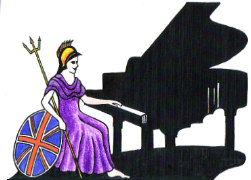Teachers, Accompanists and Piano Entertainers in the UK

UK Piano Page

38 Joel Street
Northwood Hills
Northwood, London HA6 1PA
England
We are importers and distributors of new and
117 Narborough Rd
Leicester, Leicestershire LE3 0PA
England
Keysound Looking for music shops in Leicester? We
Unit 15, Witham Point
Wavell Drive
Lincoln, Lincolnshire LN3 4PL
England
We are dedicated piano specialists in Lincoln and
C/O Unit 4 Pantheon Park, Wednesfield way
Wolverhampton, West Midlands WV11 3DS
England
Donner is a musical instrument online store.
7 - 9 Tib Street
Manchester
Manchester, Greater Manchester M4 1AD
England
C. Bechstein's Northern Flagship piano showroom
Music Festival for performers and guests Our 10th
18-06-2022 12:30PM
The Morecambe Bay Piano Group was set up to extend
11-12-2021 01:00PM
The Morecambe Bay Piano Group was set up to extend
08-01-2022 01:00PM
The Morecambe Bay Piano Group was set up to extend
12-02-2022 01:00PM